Cohen, S. R; Mailey, B.
Clinics in Plastic Surgery, 2012-10-01, Volúmen 39, Número 4, Pages 453-464
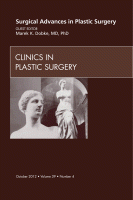
The identification of regenerative cells in adult human fat has invigorated the field of facial fat grafting. This article reviews traditional and cell-enriched fat grafting methods and the use of fat to create or refine aesthetic results. The rationale and potential applications of adipocyte-derived stem and regenerative cells in facial surgery are also described. The reader is presented with surgical techniques for harvesting and delivering fat grafts to optimize engraftment. Mesotherapy and related applications currently under investigation are also discussed.
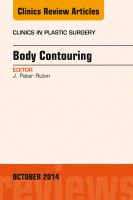 Major surgical body contouring procedures have several inherent drawbacks, including hospitalization, anesthetic use, pain, swelling, and prolonged recovery. It is for these reasons that body contouring through noninvasive and minimally invasive methods has become one of the most alluring areas in aesthetic surgery. Patient expectations and demands have driven the field toward safer, less-invasive procedures with less discomfort, fewer complications, and a shorter recovery. In this article, the current minimally invasive and noninvasive modalities for body contouring are reviewed.
Major surgical body contouring procedures have several inherent drawbacks, including hospitalization, anesthetic use, pain, swelling, and prolonged recovery. It is for these reasons that body contouring through noninvasive and minimally invasive methods has become one of the most alluring areas in aesthetic surgery. Patient expectations and demands have driven the field toward safer, less-invasive procedures with less discomfort, fewer complications, and a shorter recovery. In this article, the current minimally invasive and noninvasive modalities for body contouring are reviewed.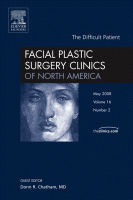 With the popularity of cosmetic surgery procedures, it is vital that the surgeon select patients for procedures who likely will benefit, handle stress in a healthy manner, and not pose an undue level of aggravation to the surgeon and staff. By using a carefully planned preoperative written assessment, the surgeon can help identify patients who, for psychologic reasons, are emotionally suitable for such surgery.
With the popularity of cosmetic surgery procedures, it is vital that the surgeon select patients for procedures who likely will benefit, handle stress in a healthy manner, and not pose an undue level of aggravation to the surgeon and staff. By using a carefully planned preoperative written assessment, the surgeon can help identify patients who, for psychologic reasons, are emotionally suitable for such surgery.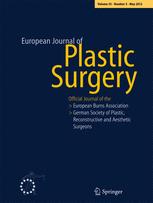
 Late haematomas and seromas (≥4 months postoperatively) in breasts with silicone prosthesis have been reported. Since 2001, there have only four patients with such delayed complication visiting our hospitals. The purpose of this literature review and our case presentation is to have more understanding about the clinical symptoms, surgical managements and relationship with implants for this late complication.
Late haematomas and seromas (≥4 months postoperatively) in breasts with silicone prosthesis have been reported. Since 2001, there have only four patients with such delayed complication visiting our hospitals. The purpose of this literature review and our case presentation is to have more understanding about the clinical symptoms, surgical managements and relationship with implants for this late complication.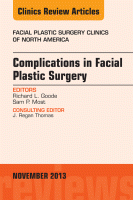 Rhytidectomy remains a challenging surgical procedure for even the most experienced aesthetic plastic surgeons. The challenges are compounded by complications that are inherent to this procedure and place added pressure on the doctor-patient relationship. Expectations for both parties are high and the margin for error nil. This article presents a personal approach to the avoidance and management of complications associated with facelift surgery. It presents the author’s personal approach as a plastic surgeon in the practice of aesthetic plastic surgery over the past 25 years. Clinical pearls are provided to obtain optimum results in rhytidectomy and limit associated sequelae.
Rhytidectomy remains a challenging surgical procedure for even the most experienced aesthetic plastic surgeons. The challenges are compounded by complications that are inherent to this procedure and place added pressure on the doctor-patient relationship. Expectations for both parties are high and the margin for error nil. This article presents a personal approach to the avoidance and management of complications associated with facelift surgery. It presents the author’s personal approach as a plastic surgeon in the practice of aesthetic plastic surgery over the past 25 years. Clinical pearls are provided to obtain optimum results in rhytidectomy and limit associated sequelae.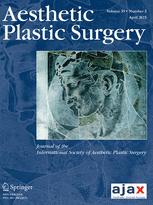 Several companies offer anatomically shaped breast implants but differences among manufacturers are often misunderstood. The shell texture is a crucial parameter for anatomically shaped implants to prevent rotation and to decrease the risk of capsular contracture, even though concerns have recently been raised concerning the complications associated with textured breast implants. The aim of this study was to characterize differences in terms of texture, cell adhesion, shape, and stiffness between some commonly used anatomically shaped implants from three different manufacturers.
Several companies offer anatomically shaped breast implants but differences among manufacturers are often misunderstood. The shell texture is a crucial parameter for anatomically shaped implants to prevent rotation and to decrease the risk of capsular contracture, even though concerns have recently been raised concerning the complications associated with textured breast implants. The aim of this study was to characterize differences in terms of texture, cell adhesion, shape, and stiffness between some commonly used anatomically shaped implants from three different manufacturers.






 Sitio web publicado el
Sitio web publicado el
Los lectores comentan